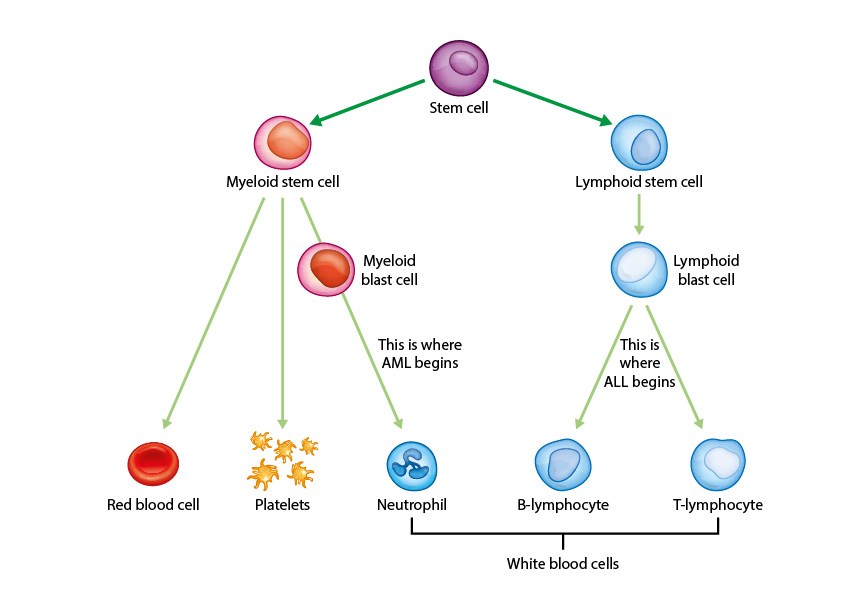Blood cancers (defunct)
Leukaemia is a cancer that affects how healthy blood cells are made. The 4 main types are acute myeloid leukaemia, acute lymphocytic leukaemia, chronic myeloid leukaemia and chronic lymphocytic leukaemia.
Detecting cancer early
Learn about changes to look for when checking your body for early detection, and how cancer is usually diagnosed.
Patient Education
If you have been diagnosed with cancer, our patient education programmes are available to you free of charge. Here you can watch the programme videos in your own time.
What is leukaemia?
Leukaemia is cancer of your white blood cells and bone marrow (the soft spongy tissue that fills the centre of some of your bones). New blood cells are normally made in your bone marrow and then move into your blood. Old cells are replaced when needed.
With leukaemia, the process of making and replacing blood cells goes wrong - Immature blood cells divide quickly and do not grow into mature cells. These immature cells crowd your bone marrow and prevent it from making normal healthy cells. You get symptoms because there aren’t enough healthy blood cells to do their jobs in the body and the increasing number of leukaemia cells are a burden on your system.
Blood cells and leukaemia
To understand leukaemia it helps to understand how blood cells are made.
All blood cells come from cells known as stem cells. These start out as immature cells (blast cells) and then they develop into different types of mature blood cells.
Lymphoid stem cells develop into lymphocytes. Lymphocytes are white blood cells that fight infection. They are further divided into T-cells and B-cells, depending on how they fight infection.
Myeloid stem cells go on to form red blood cells, platelets and some types of white blood cells. Red blood cells carry oxygen to all the tissues in your body, white blood cells are involved in fighting infection and platelets form clots, which stop you from bleeding.

Describing the types of leukaemia
The leukaemia develops quickly, over days or weeks.
The word ‘acute’ does not refer to how successful the treatment will be.
The disease develops slowly, usually over months or years.
Affects the myeloid cells, which develop into red blood cells, white blood cells and platelets.
Affects the lymphoid cells, which develop into white blood cells called lymphocytes.
FInd out more about the types of leukaemia
We have information on the 4 main types of leukaemia, including symptoms, tests and treatment:
Our Survivor Support programme we can match you with a volunteer who has gone through a similar experience.
If you’re finding it difficult to get to and from treatments, we may be able to ease some of the strain of travelling to and from your appointments.
